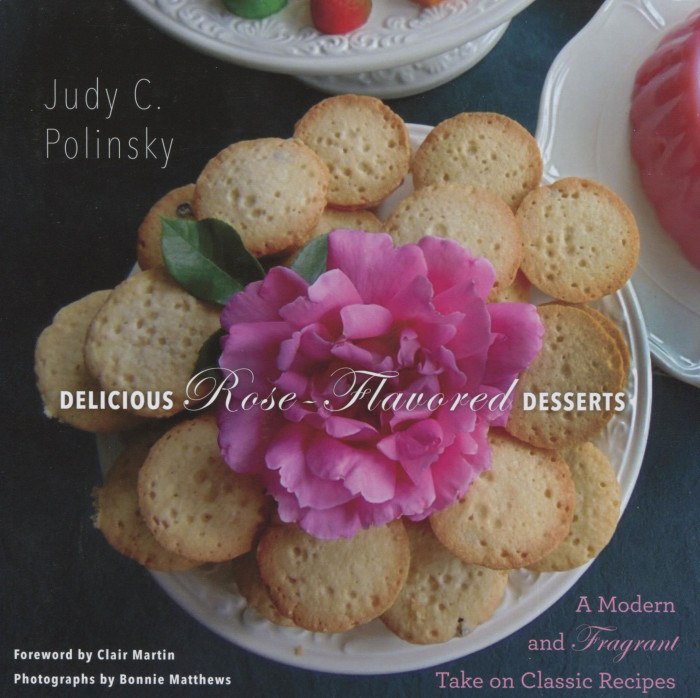Roses have been part of our human culture for thousands of years. Ancient societies, from China to Rome, relished them for their beauty and their scent. They have been used for perfumes, decorations, even medication. And, for cooking.
Rose petals and rose water have been ingredients employed around the world. The pinnacle for culinary roses was England, in the Georgian era of 1714-1830. There, rose water in particular was employed with amazing diversity. Imagine baking without vanilla. No vanilla. Instead, you substitute rose water.
There are 50 recipes here, presented twice, first in the original wording and then in their modernized format devised by author Judy C. Polinsky. Judy is one of those amazing people with a breadth of interests and talents. She’s an amateur historian with a penchant for roses. Roses and roses.
It may seem strange of think of rosewater in gingerbread, but that recipe is here. And it uses a full ¼ cup of rose water. Come fall, when the nights are cold, Suzi and I are breaking out the rose water and seeing what mysteries are revealed.
In the simplest recipe in this book, Portugal Cream, an egg and sugar mixture is cooked until thick enough to serve. The only flavoring is rose water. Here’s the recipe, one I suggest as the beginning of your rose adventures:
Portugal Cream
Ingredients:
- 12 eggs
- 1 tablespoon rose water
- ¼ cup sugar
Preparation:
Break the eggs into a large bowl and beat until light and frothy. Strain the eggs through a cheesecloth into another bowl. Add the rose water and sugar and beat until well blended and frothy. Place the mixture in a double boiler. Stir constantly until it boils and thickens.
Allow the mixture to cool, then put it into a serving dish or glasses.

